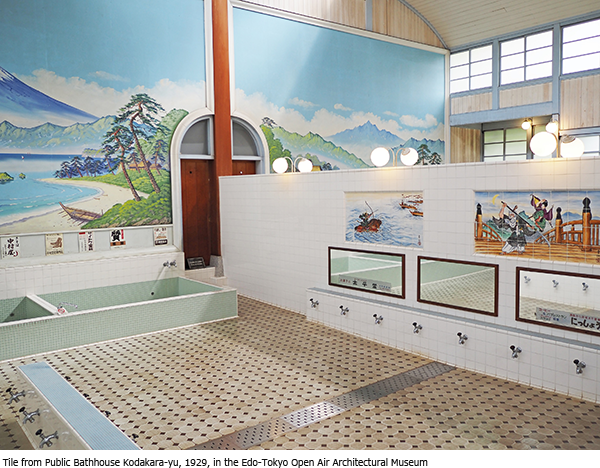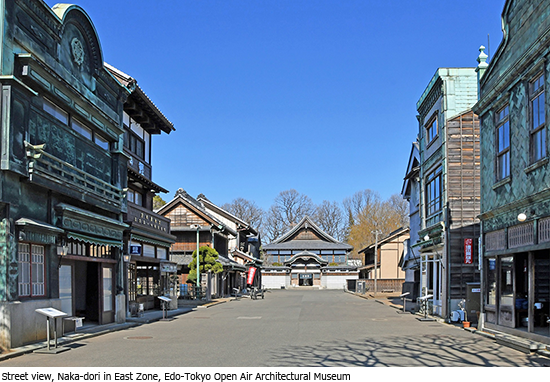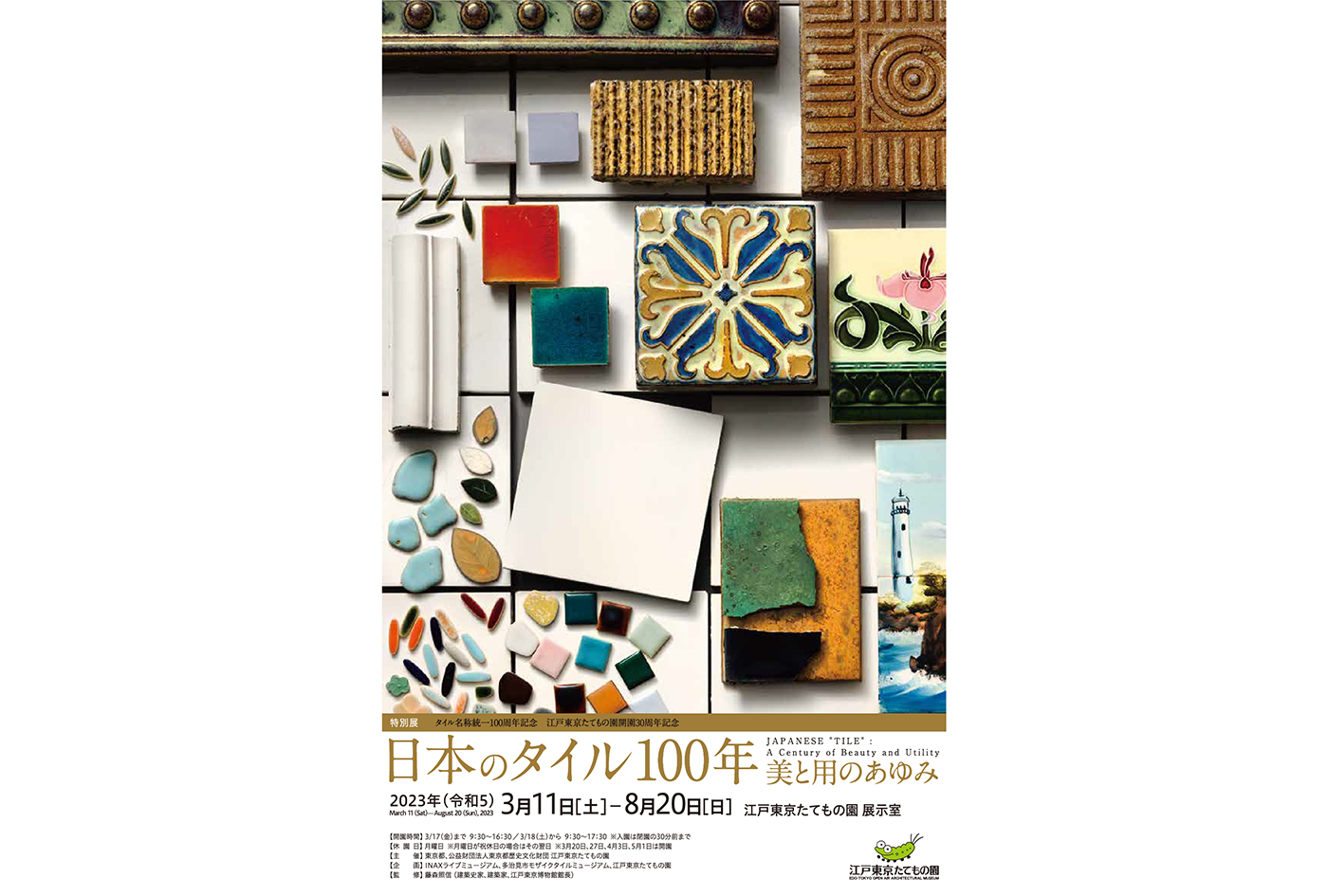JAPANESE ”TILE”: A Century of Beauty and Utility in Edo-Tokyo Open Air Architectural Museum
A special exhibition, “JAPANESE ”TILE”: A Century of Beauty and Utility” will be held at the Edo-Tokyo Open Air Architectural Museum from March 11, 2023 (Sat) to August 20, 2023 (Sun). It’s celebrating one century of a unified naming system for “Tiles”.
In this exhibition, you will be able to look back on the role that tiles have played in various places such as kitchens, toilets and washrooms, buildings, universities, subway stations, and public bathhouses, along with the historical background. Through the beauty and use of Japanese tiles, you may be able to look into the future of Japanese life and architecture.
This special exhibition is a joint project of the Edo-Tokyo Open-Air Museum, the INAX Live Museum in Tokoname City, Aichi Prefecture, and the Tajimi Mosaic Tile Museum in Tajimi City, Gifu Prefecture, both of which are famous for their ceramics production.
The concept of exploring the origins and history of tiles in Japan and discovering future directions is the same for all three museums, but the composition and contents of the exhibitions will be adjusted according to the characteristics of each venue. We may expect an exhibition that is typical of the Edo-Tokyo Open Air Architectural Museum.

Tiles are said to have originated in ancient Egypt, where they have been excavated to decorate the walls of the underground spaces of the pyramids. Tiles have spread throughout the world over thousands of years because of their resistance to water and fire, their resistance to corrosion, and their ease of cleaning. Tiles first came to Japan in the 6th century with the introduction of Buddhism, but their widespread use was triggered by the introduction of architectural culture using tiles, bricks, and terra-cotta from the West at the end of the 19th century.

In 1922, at the “Tokyo Exposition for Peace” held in Ueno Park, Tokyo, it was declared that tiles, which until then had more than 25 different designations, would be unified under one name, “tiles,” and their usefulness was widely publicized. Mass production of tiles modeled after imported products followed, and after overcoming major events such as major earthquakes and World War II, Japan’s unique tile culture blossomed in response to changing lifestyles and urbanization. Through the beauty and utility of tiles that have been used in various places in our daily lives, you will learn about the role that tiles have played, and this will give you an opportunity to think about the future of living and architecture.

The mission of the Edo-Tokyo Open-Air Architectural Museum is to restore, preserve, and exhibit historical buildings of high cultural value that cannot be preserved on-site, and to pass them on to future generations as valuable cultural heritage. They opened in 1993 as a branch of the Tokyo Metropolitan Edo Tokyo Museum in Koganei Park, Tokyo.

They have recreated the townscape of downtown and uptown with restored buildings, and they have exhibits of folklore materials inside, so you can learn about the life and business of the common people in modern Japan. You will not only be able to visit the exhibits, but you will also be able to participate in the “Promotion Programs,” “Special Exhibitions,” and “Museum Talks” that make use of the park’s materials and environment, which, together with events throughout the four seasons, will allow you to participate in this museum in many different ways.

The citizens of Tokyo love the Edo-Tokyo Open-Air Architectural Museum because it offers a variety of ways for people to enjoy the park, whether it is to reminisce about the city and life in Tokyo in the past, to discover and learn something new, or to be healed by the vast greenery of the park’s grounds. Why don’t you visit the special exhibition “100 Years of Japanese Tiles – Beauty and Usage” held in the pleasant season from spring to summer?
Exhibition Overview
Chapter 1: Seeking the Origins of Japanese Tiles
Chapter 2: The Spread of Tiles and Unification of Terms
Chapter 3: 100 Years of Beauty and Utility
| Title | JAPANESE ”TILE” : A Century of Beauty and Utility |
| Period | March 11 (Sat.) to August 20 (Sun.), 2023 |
| Venue | Edo-Tokyo Open Air Architectural Museum, Exhibition Room |
| Address | 3-7-1 Sakuracho, Koganei-shi, Tokyo (inside Koganei Park) |
| Official Website | https://www.tatemonoen.jp/english/special/2023/20230311.php |
| Opening Hours | 9:30 AM to 5:30 PM (Admission until 5:00 PM) |
| Closed | Every Monday *When Monday is a national holiday, closed on the following day. *The Museum will be open on the following Mondays : April 3, and May 1, 2023 |
| Ticket Information | You can purchase dated tickets from this website. (only in Japanese) |
| Admission | Please refer to this page |

